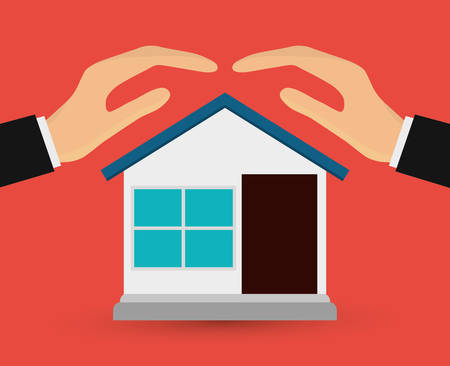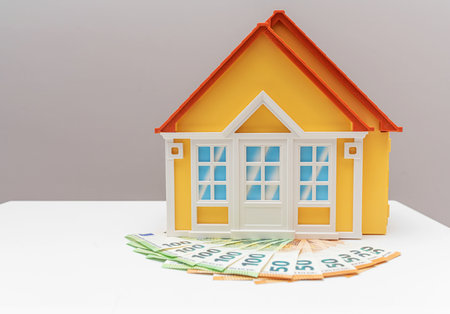1. Understanding Homeowners Insurance Basics
Homeowners insurance is a vital part of protecting your home and personal belongings from unexpected events, such as fire, theft, or natural disasters. For most American homeowners, having the right insurance coverage is not only smart—its often required by mortgage lenders. If youre new to homeownership or just want to make sure you have the right protection, its important to understand the basics of how homeowners insurance works, the types of policies available, and why it matters.
What Is Homeowners Insurance?
Homeowners insurance is a policy that provides financial protection in case something happens to your house or the items inside it. It covers damages caused by specific risks (called “perils”), liability if someone gets hurt on your property, and sometimes even living expenses if you have to move out during repairs.
Types of Homeowners Insurance Policies
There are several different types of homeowners insurance policies in the U.S., each offering different levels of coverage. The most common policies are listed below:
| Policy Type | Description | Best For |
|---|---|---|
| HO-1 (Basic Form) | Covers a limited list of perils, such as fire and theft. | Rarely used; very basic protection. |
| HO-2 (Broad Form) | Covers more perils than HO-1, including things like falling objects or damage from the weight of ice/snow. | People who want more than minimal coverage but still limited. |
| HO-3 (Special Form) | The most popular type; covers your home against all perils except those specifically excluded (like floods or earthquakes). | Most single-family homeowners. |
| HO-4 (Renter’s Insurance) | Covers personal property for renters but not the building itself. | Renters, not homeowners. |
| HO-5 (Comprehensive Form) | Offers broader and higher coverage than HO-3, especially for personal belongings. | Homeowners with high-value possessions. |
| HO-6 (Condo Insurance) | Covers personal property and interior portions of a condo unit. | Condo owners. |
| HO-7 (Mobile Home Form) | Covers mobile or manufactured homes similarly to HO-3. | Owners of mobile homes. |
| HO-8 (Older Home Form) | Designed for older homes where replacement cost may be higher than market value. | Owners of historic or older houses. |
Why Is Homeowners Insurance Essential?
Your home is likely one of your biggest investments. Without insurance, you could face huge out-of-pocket expenses if something goes wrong—whether thats storm damage, a kitchen fire, or even a lawsuit because someone was injured on your property. Most mortgage companies also require you to carry homeowners insurance before they’ll approve your loan, making it both a practical necessity and a legal requirement for many Americans.
2. What Does Homeowners Insurance Cover?
Homeowners insurance in the United States is designed to protect your home, belongings, and finances from unexpected events like fire, theft, storms, and accidents. Let’s break down the main coverages included in a standard policy and see how each one works for American homeowners.
Dwelling Coverage
This coverage pays to repair or rebuild your house if it’s damaged by things like fire, hail, lightning, or vandalism. It covers the physical structure—walls, roof, floors, built-in appliances, and more.
Example:
If a kitchen fire destroys part of your home, dwelling coverage helps pay for repairs or reconstruction.
Personal Property Coverage
This protects your belongings—furniture, electronics, clothing, sports equipment—from covered risks like theft or fire. Coverage applies even if the item is stolen outside your home (for example, your laptop stolen from your car).
| Item | Covered? | Special Limits? |
|---|---|---|
| Sofa | Yes | No |
| Laptop | Yes | Might have a dollar limit; check your policy |
| Jewelry | Yes | Usually limited to $1,500; higher coverage needs an add-on |
| Bicycle | Yes | No (unless very high value) |
Example:
If someone breaks into your home and steals your TV and jewelry, personal property coverage helps pay to replace them (up to policy limits).
Liability Protection
This covers you if someone gets hurt on your property or you accidentally damage someone else’s property. Liability protection can help pay for legal fees and medical bills.
Example:
If a visitor slips on your icy sidewalk and sues you for their injuries, liability coverage steps in to cover costs up to your policy limits.
Additional Living Expenses (ALE)
If your home becomes unlivable due to a covered loss (like a major fire), ALE pays for extra costs while you live elsewhere. This includes hotel bills, restaurant meals, and other living expenses above your normal spending.
| Expense Type | Covers? |
|---|---|
| Hotel stays | Yes |
| Restaurant meals | Yes (extra costs above normal grocery spending) |
| Laundry services | Yes (if you normally do laundry at home) |
Example:
If a tornado damages your house and you need to stay in a hotel for three weeks while repairs are made, ALE helps cover those extra costs.

3. What’s Not Covered: Common Exclusions and Limitations
When shopping for homeowners insurance in the United States, it’s just as important to know what your policy doesn’t cover as it is to understand what it does. Every policy comes with a list of exclusions and limitations—specific situations or types of damage that aren’t included in standard coverage. Being aware of these can help you avoid unwelcome surprises when you file a claim.
Typical Exclusions in Homeowners Insurance
Here are some of the most common exclusions you’ll find in American homeowners insurance policies:
| Exclusion | Description | Can You Buy Extra Coverage? |
|---|---|---|
| Floods | Damage from flooding, including heavy rain, hurricanes, or overflowing rivers, is not covered. | Yes, through a separate flood insurance policy (often via the National Flood Insurance Program). |
| Earthquakes | Earthquake-related damage isn’t covered by most standard policies. | Yes, with a special earthquake endorsement or standalone policy. |
| Mold and Rot | Damage from mold, fungus, or rot typically isn’t covered if it results from neglect or maintenance issues. | Sometimes, limited coverage is available for an extra premium. |
| Sewer Backup | If your sewer backs up into your home, most policies won’t pay for the damages. | Add-on coverage (endorsement) may be available. |
| Intentional Damage | Any damage you cause on purpose is never covered. | No additional coverage available. |
| Pest Infestations | Damage caused by termites, rodents, or other pests isn’t covered. | No; regular maintenance and pest control are homeowner responsibilities. |
| Wear and Tear | Normal aging and deterioration of your home or belongings aren’t covered. | No; routine upkeep is expected from the homeowner. |
Other Common Policy Limitations
Apart from outright exclusions, most policies have limits on certain types of personal property. For example:
| Item Category | Typical Standard Coverage Limit* |
|---|---|
| Jewelry & Furs | $1,500 – $2,500 per claim (higher value items need extra coverage) |
| Electronics | $1,000 – $2,500 per claim (depending on the insurer) |
| Cash & Coins | $200 – $500 per claim |
| Bicycles & Sports Equipment | $1,000 – $2,000 per claim (add-ons available) |
| Firearms | $2,000 – $2,500 per claim (with optional endorsements for more) |
*Limits vary by insurer and policy type. You can often increase these limits by purchasing endorsements or riders for specific high-value items.
Natural Disasters: Special Attention Needed!
The United States faces a wide range of natural disasters—hurricanes along the Gulf Coast and Atlantic seaboard, earthquakes in California and other western states, tornadoes in the Midwest, and wildfires in many regions. Unfortunately, standard homeowners insurance rarely covers floods and earthquakes. If you live in a high-risk area for these disasters, make sure to ask your agent about adding the right protection so your home stays safe no matter what Mother Nature throws your way.
Your Next Steps: Read Your Policy Carefully!
The best way to avoid surprises? Always read your policy documents closely and talk with your insurance agent about any questions. They can explain exactly what’s excluded and recommend add-ons tailored to your needs and location. Understanding these exclusions helps you make informed choices—and keeps you protected when it matters most.
4. How to Choose the Right Policy and Coverage Amounts
Understanding Your Coverage Needs
Choosing the right homeowners insurance policy starts with understanding what you need to protect. Every American home is different, so you’ll want to think about your home’s value, where you live, and the stuff you own. Take time to list everything important in your home—furniture, electronics, jewelry, and more. Remember, your policy should cover not just your house but also your belongings and personal liability in case someone gets hurt on your property.
Evaluating Coverage Types
Homeowners insurance typically covers three main areas: dwelling (the structure of your home), personal property (your belongings), and liability (if someone sues you for injuries or damages). But policies can vary widely. Here’s a quick look at what most standard policies include:
| Coverage Type | What It Covers |
|---|---|
| Dwelling | Your home’s structure, including walls, roof, and built-in appliances. |
| Personal Property | Your furniture, clothes, electronics, and other belongings. |
| Liability Protection | Lawsuits for bodily injury or property damage that happen on your property. |
| Additional Living Expenses (ALE) | Costs if you need to live elsewhere while your home is repaired after a covered event. |
How Much Coverage Do You Need?
The key is to make sure you have enough coverage to rebuild your home and replace your things if disaster strikes. Don’t just go by the purchase price of your house—focus on rebuilding costs in your area. Many insurers offer online calculators to help estimate this. For personal property, walk through each room and write down what you own. Keep receipts or photos as proof for claims later.
Common Pitfalls: Underinsurance vs. Overpaying
If you’re underinsured, you might not get enough money after a major loss. On the flip side, overinsuring means paying higher premiums than necessary. Here’s how to avoid both:
- Review policy limits regularly: Update coverage if you renovate or buy valuable items.
- Avoid duplicate coverage: Some valuables like jewelry may require separate riders; don’t pay twice for similar protection.
- Check deductibles: Higher deductibles mean lower premiums but more out-of-pocket costs if you file a claim.
Comparing Insurance Providers in the U.S.
The American insurance market is competitive, so it pays to shop around. Look at several providers—not just for price but also for customer service ratings, financial strength (you want them to be able to pay claims!), and discounts they offer. Ask friends and neighbors who they use and check reviews online from sources like J.D. Power or AM Best.
| Provider Feature | Why It Matters | Questions to Ask |
|---|---|---|
| Financial Strength Ratings | You want an insurer who can pay claims even after big disasters. | What’s their rating from AM Best or Standard & Poor’s? |
| Customer Service Record | Fast claims processing makes recovery easier. | How do customers rate their claims experience? |
| Add-on Options/Riders | You may need extra coverage for floods, earthquakes, or valuables. | Are there affordable options for special needs? |
| Discounts Offered | Savings add up! Bundling auto/home policies often brings discounts. | What discounts are available for safety features or loyalty? |
Your Next Steps: Get Quotes and Review Annually
The best way to find the right policy at the right price is to get multiple quotes—at least three—from reputable companies. Compare not just costs but also what’s included in each policy. And remember: life changes fast! Review your coverage every year or whenever something major changes with your home or possessions so that you’re always properly protected without overpaying.
5. Filing a Claim: What Every Homeowner Needs to Know
Step-by-Step Guide to Filing a Homeowners Insurance Claim
If you ever need to file a homeowners insurance claim in the U.S., knowing the process can help make everything smoother and less stressful. Here’s a simple step-by-step guide:
| Step | What To Do |
|---|---|
| 1. Document the Damage | Take photos or videos of all damage as soon as it’s safe. Write down details about what happened, including the date and time. |
| 2. Prevent Further Damage | If possible, take steps to prevent more damage (like covering a broken window). Save receipts for any emergency repairs. |
| 3. Contact Your Insurance Company | Call your insurer or use their app/website to start the claims process. Have your policy number ready. |
| 4. Fill Out Claim Forms | Your insurance company will send forms for you to complete. Return them quickly with all requested information. |
| 5. Meet with an Adjuster | An insurance adjuster may visit your home to assess the damage. Walk through the property with them and point out all affected areas. |
| 6. Get Repair Estimates | You might be asked to get estimates from licensed contractors for repairs or replacements. |
| 7. Track Your Claim Status | Follow up regularly with your insurer for updates and keep records of every conversation. |
| 8. Receive Payment and Start Repairs | Once approved, you’ll receive payment based on your coverage and deductible. Use it to pay for repairs or replacements. |
Tips for Smooth Claims Handling
- Stay Organized: Keep a folder (physical or digital) with all claim-related documents, including photos, receipts, emails, and notes from phone calls.
- Be Honest and Detailed: Provide complete and accurate information on forms and when speaking with your insurer or adjuster.
- Know Your Policy: Understand what is covered, your deductible amount, and any exclusions before disaster strikes.
- Act Fast: Report damage as soon as possible—delays could slow down your claim or even affect approval.
- Avoid Making Major Repairs Before Approval: Only make temporary fixes until your adjuster has seen the damage, unless waiting would cause more harm.
Working with Insurance Adjusters in the U.S.
The insurance adjuster’s job is to inspect the damage and estimate repair costs. Here’s how to work well with them:
How to Make the Most of Your Adjuster Visit:
- Be Present: If possible, be home during the inspection so you can answer questions and point out all damages.
- Prepare Documentation: Have your photos, videos, lists of damaged items, and receipts ready for review.
- Ask Questions: Don’t hesitate to ask about anything you don’t understand regarding coverage or next steps.
- Treat Them Professionally: Remember, adjusters are there to help but also represent your insurer; being polite and cooperative goes a long way.
- If Needed, Get a Second Opinion: If you disagree with their assessment, you can request another adjuster or hire an independent public adjuster (at your own expense).
Quick Reference: What Documents to Have Ready During a Claim
| Document Type | Description/Example |
|---|---|
| Proof of Loss Form | The official claim form provided by your insurer detailing losses/damages. |
| Photos/Videos of Damage | Pictorial evidence of property conditions post-incident. |
| Receipts/Invoices | Bills for repairs or replacement purchases related to the loss. |
| Your Insurance Policy Number & Details | Your specific coverage information found in your policy paperwork. |
This step-by-step approach helps ensure that filing a homeowners insurance claim is as stress-free as possible for American homeowners. Proper documentation, clear communication, and understanding your policy are key to getting back on track after a loss.


